|
A
|
|
The Academy of Natural Sciences
Founded in 1812, the Academy of Natural Sciences (Philadelphia, Pennsylvania) is America's oldest natural history museum, and a world leader in biodiversity and environmental research. The Academy carries out its mission to encourage and cultivate the sciences by exploring the remarkable diversity of our natural world and sharing these discoveries with the public through innovative exhibits, publications, and educational programming.
http://www.ansp.org/
|
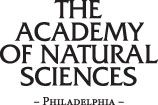 |
The Alabama Museum of Natural History
Located at the core of the University of Alabama Campus in historic Smith Hall, the Alabama Museum of Natural History is a supporting service essential to learning and quality of life at the University of Alabama. The Museum provides an appropriate setting for teaching, research, creative activity and service for students and visitors. Experience the natural diversity of Alabama through exhibits from the Age of Dinosaurs, the Coal Age, and the Ice Age. View the displays of geology, zoology, mineralogy, paleontology, ethnology, history, and photography. See the Hodges meteorite, the only meteorite known to have struck a human, and the State Fossil of Alabama: Basilosaurus cetoides.
|
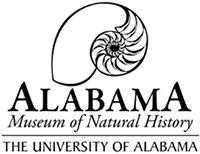 |
Alaska Museum of Natural History
The Alaska Museum (Anchorage) energetically pursues its mission to study and exhibit natural history materials relating to Alaska's natural history and to promote and develop educational programs which benefit Alaska visitors and residents alike.
|
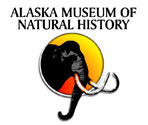 |
American Museum of Natural History
The mission of the American Museum of Natural History (New York City) is to discover, interpret, and disseminate-through scientific research and education-knowledge about human cultures, the natural world, and the universe.
http://www.amnh.org/
|
 |
Anniston Museum
Dynamic Earth at the Anniston Museum focuses on the processes which formed the planet, and of the dinosaurs which once roamed Alabama. Here you will find fossils, minerals, dinosaur replicas, see a real chunk of meteorite, and learn about the power of weather, earthquakes and plate tectonics. A life-sized stegosaurus skeleton model, a diorama featuring life-size Pteranodon and Albertosaurusmodels and a realistic walk-through construction of an Alabama cave environment add to this hall’s dynamic atmosphere. Also featured are rocks and mineral specimens from the collection of the Smithsonian Institution, fossils - including the tooth of a 75-foot-long pre-historic shark, and a hurricane ball.
http://www.annistonmuseum.org/
|
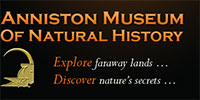 |
Arizona Museum of Natural History
The Arizona Museum of Natural History (Mesa, Arizona) is the premier natural history museum in Arizona. It is dedicated to inspire wonder, respect and understanding for the natural and cultural history of the Southwest. The Arizona Museum of Natural History is renowned for its field research programs and provides the public with opportunities to work on archaeological and paleontological digs.
http://arizonamuseumofnaturalhistory.org/
|
 |
Arizona Science Center
Arizona Science Center's mission is to inspire, educate, and entertain people of all ages about science. Using an informal, hands-on approach to science exploration and inspiration the Center (in Phoenix) has more than 164,000 square-feet of space, of which 98,000 is dedicated to the exploration of our guests. Additional learning opportunities and services include outreach programs, focused field trips, camps, classes, to-the-moon and beyond presentation in the Dorrance Planetarium, immersive shows in the 5-story IMAX® Theater, and traveling exhibitions.
http://www.azscience.org/
|
 |
Arkansas Museum of Discovery
The Mission of the Museum of Discovery (Little Rock) is to ignite a passion for science, technology and math in a dynamic, interactive environment.
https://museumofdiscovery.org/
|
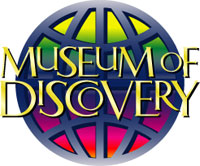 |
The Audubon Nature Institute
The purpose of Audubon Nature Institute is to celebrate the wonders of nature by creating a family of museums and parks dedicated to the natural environment.
http://audubonnatureinstitute.org/
|
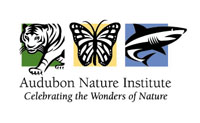 |
Augustana College's Fryxell Geology Museum
Begun in the late 1880s, Augustana's Fryxell Geology Museum in Rock Island, Illinois has become one of the largest and finest collections of rocks, minerals and fossils in the Midwest. Used originally and primarily as a teaching resource for Augustana geology students, it now serves a large and varied audience including students and the community at large who are curious about early life, the development of life-forms or the formation of rocks and minerals. Of particular interest is a state-of-the-art fluorescent mineral display and an exhibit of the complete 22-foot-long skeleton of Cryolophosaurus, a large crested carnivorous dinosaur discovered in Antarctica in 1991 by Augustana paleontologist Dr. William Hammer. The museum's mission is to serve as a teaching resource for Augustana students and the public for the understanding of Earth's history, processes and materials, and to promote earth science awareness through displays, free educational programming, teaching kits loaned free-of-charge to schools and organizations, and through Augustana student-teaching community outreach.
http://www.augustana.edu/academics/majors--areas-of-study/geology/fryxell-geology-museum
|
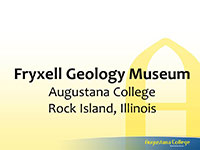 |
Aurora Fossil Museum
The Aurora Fossil Museum (Aurora, North Carolina) is dedicated to the informal science education of today's citizens with emphasis on the fauna and flora of Miocene Marine fossils including the megalodon shark. Our Earth History Gallery begins with trilobites and ends with late Ice Age animals from around the world.
http://aurorafossilmuseum.org/
|
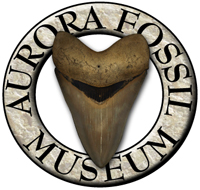 |
|
B
|
|
Bollinger County Museum of Natural History
The Bollinger County Museum of Natural History is dedicated to providing professional quality exhibits of natural history artifacts and periodical displays of past cultures, by means of educational, thought provoking exhibits that will provide the public with a desire to continue to explore the past, while preparing the way of the future.
Exhibits include the Missouri Dinosaur, Hypsibema missouriense, Lewis and Clark Exhibit, American Indian artifacts, local Civil War history, fossil prep lab, Will Mayfield College memorabilia, fossils from Missouri and around the world, wireless radio development, artifacts from the wreck of the Steamboat Montana, and a children's fun and educational room.
http://www.bcmnh.org/
|
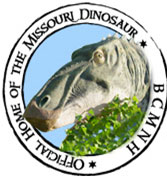 |
Bruce Museum
The Bruce Museum of Greenwich, Connecticut, promotes the understanding and appreciation of art and science to enrich the lives of all people. Consistently voted the "Best Museum" by area media, the Bruce Museum is a world-class institution highlighting art, science and natural history in more than a dozen changing exhibitions annually and its permanent environmental science galleries.
https://brucemuseum.org/
|
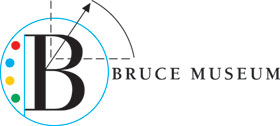 |
Buffalo Bill Center of the West
When you visit the Buffalo Bill Center of the West in Cody, Wyoming, you experience the American West in surprising new ways. Our stories entertain you, our collections inspire you, and our perspectives broaden yours. Together our five museums tell the authentic story of the American West. The Draper Natural History Museum immerses you in the ecosystems of the Greater Yellowstone region—find out about grizzly bears, wolves, moose, eagles, wildfire, geology, fossils, and more. In the Whitney Western Art Museum, see artistic masterworks and contemporary views of the land, people, and wildlife of the West. The Plains Indian Museum shares the history, art, traditions, and contemporary lives of Plains Indian peoples. In the Buffalo Bill Museum, get to know William F. Cody, the man, as well as his public persona of "Buffalo Bill," creator and star of Buffalo Bill’s Wild West. And in the Cody Firearms Museum, discover how firearms shaped the culture and image of the American West.
https://centerofthewest.org/
|
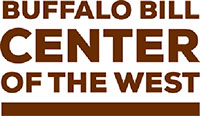 |
Buffalo Museum of Science
The Buffalo (New York) Museum of Science is the non-profit educational institution dedicated to the study and interpretation of the natural and physical sciences. Its extensive collections of over 600,000 specimens and artifacts represent all facets of the natural world with an emphasis on Western New York as well as man-made objects spanning the globe. Based at 1020 Humboldt Parkway and anchoring Buffalo's East Side in Olmsted-designed Martin Luther King, Jr. Park since 1929, the Museum presents a wide variety of programs and services for children, teachers, families, adults, and community organizations throughout each year. The Museum also operates Tifft Nature Preserve in South Buffalo, a 264-acre urban wetland preserve on reclaimed former industrial land and seasonally sponsors archaeological exploration at the Hiscock Site in nearby Genesee County, NY, one of North America's richest Ice Age sites.
http://www.sciencebuff.org/site/
|
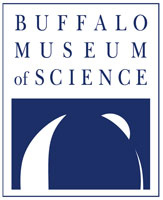 |
The Burke Museum of Natural History and Culture
The Burke Museum (Seattle) creates a better understanding of the world and our place in it. The museum is responsible for Washington State collections of natural history and cultural heritage, and for sharing the knowledge that makes them meaningful. The Burke welcomes a broad and diverse audience and provides a community gathering place that nurtures life-long learning and encourages respect, responsibility, and reflection.
http://www.burkemuseum.org/
|
 |
Burpee Museum of Natural History
Come visit Burpee Museum and its award-winning exhibit Jane: Diary of a Dinosaur. Explore the history of the world’s most complete and best preserved juvenile T. rex skeleton found by Burpee Museum researchers on public land in the badlands of Montana, called one of the ten most important dinosaur discoveries in the past 100 years. Additionally, the exhibit Homer’s Odyssey: From the Badlands to Burpee, features a sub-adult or "teen-age" Triceratops, also found on public land in the Montana badlands by a Burpee expedition crew.
In addition to Jane and Homer, families can experience four floors of engaging exhibits. Windows to Wilderness focuses on the nature of the Rock River Valley, and Burpee's Green Roof is the first rooftop garden in Rockford. Other exhibits include a Colombian Mammoth skeletal cast, Pennsylvanian coal forest with simulated thunderstorm, Native American exhibit with full-sized dwellings, Geoscience, and a viewing lab where visitors can watch Burpee Museum staff work on specimens from the museum’s collections and recent dinosaur discoveries.
Don’t miss Burpee’s annual Paleofest in March – details at http://www.burpee.org/
737 N. Main St.
Rockford, IL 61103
Phone: (815) 965-3433
|
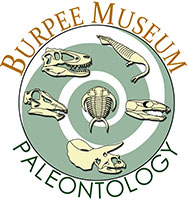 |
|
C
|
|
Calvert Marine Museum
The Calvert Marine Museum (Solomons, Maryland) is a public, non-profit, educational, regionally oriented museum dedicated to the collection, preservation, research, and interpretation of the culture and natural history of Southern Maryland. The Calvert Marine Museum has grown to be one of the premier visitor attractions in Southern Maryland.
http://calvertmarinemuseum.com/
|
 |
Carnegie Museum of Natural History
Carnegie Museum of Natural History (Pittsburgh) conducts scientific inquiry, generates knowledge, and promotes stewardship of the Earth. Through public engagement, we share the joy of discovery about the processes that shape the diversity of our world and its inhabitants.
http://www.carnegiemnh.org/
|
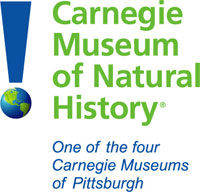 |
Carnegie Science Center
Carnegie Science Center delights, educates, and inspires through interactive experiences in science and technology. Recipient of the 2003 National Award for Museum Service, Carnegie Science Center inspires and entertains by connecting science and technology with everyday life. In addition to providing valuable scientific experiences, Carnegie Science Center engages in outreach programs that serve Pittsburgh's diverse community. The Science Center is located on Pittsburgh's North Shore along the banks of the Ohio River and is accessible to persons with disabilities.
http://www.carnegiesciencecenter.org/
|
 |
The Centennial Museum at the University of Texas-El Paso
The Centennial Museum at the University of Texas-El Paso has a diverse mission in support of UTEP. Its permanent exhibits focus on the natural and cultural history of the Chihuahuan Desert where UTEP and EL Paso are located. One of those galleries tells the general story of paleontology and the specific fossil history of El Paso. Displayed is the most ancient fossil of the El Paso region, Colenia frquens, a cyan bacterium (blue-green alga) some 2 billion years old, found in Fusselman Canyon in the Franklin Mountains. A wide range of other local fossils, including mastodons, mammoths and glyptodonts, is on view.
http://admin.utep.edu/Default.aspx?tabid=59900
|
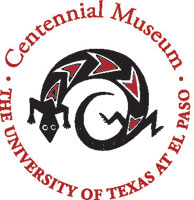 |
Chesapeake Children’s Museum
The mission of Chesapeake Children's Museum is to create an environment of discovery about oneself, the peoples, the technologies, and the ecology of the Chesapeake Bay area for all our children and for the children in us all.
http://www.theccm.org/
|
 |
Children's Discovery Museum
The Children's Discovery Museum is three stories of amazing hands-on fun in Normal, Illinois. The surprising array of exhibits and programs keep curious children and playful grownups happy for hours on end! The Museum’s mission to Inspire the Love of Learning through the Power of Play is accomplished with each and every visit to the CDM. You can:
http://www.childrensdiscoverymuseum.net/
|
 |
Children's Discovery Museum of San Jose
With over 150 exhibits, Children’s Discovery Museum of San Jose serves the needs of children, families and schools as a center for learning and discovery. The Museum’s newest exhibition, Mammoth Discovery!, features the fossils of a Columbian Mammoth discovered about 2 miles away from the Museum and many interactive activities designed to encourage children to discover, find out more, and tell their stories.
https://www.cdm.org/
|
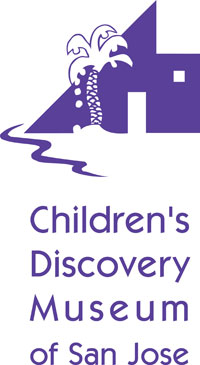 |
Children's Museum of Indianapolis
To create extraordinary learning experiences across the arts, sciences, and humanities that have the power to transform the lives of children and families.
https://www.childrensmuseum.org/
|
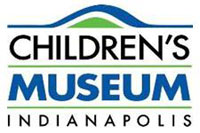 |
Cincinnati Museum Center
The Mission of Cincinnati Museum Center is to inspire all people to understand and appreciate natural history, science, and regional history; and to support the development of children. We collect and preserve; we advance and share knowledge. We stimulate curiosity and promote enjoyment of learning.
http://www.cincymuseum.org/
|
 |
Clay Center for the Arts and Sciences of West Virginia
Our mission is to inspire creativity, learning and wonder through experiences in the Arts and Sciences for all people of West Virginia and the region. The Clay Center (Charleston) is influential in the vitality of West Virginia’s progressive and thriving economy. Businesses are flourishing, tourism is vibrant, creative and talented citizens are bringing national recognition to the State. The Center’s programs enhance educational achievement and intellectual capacity and promote the arts and sciences as an integral part of life.
http://www.theclaycenter.org/
|
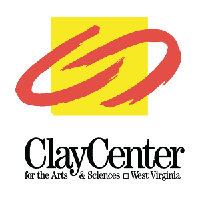 |
Cleveland Museum of Natural History
The Cleveland Museum of Natural History's mission is to inspire, through science and education, a passion for nature, the protection of natural diversity, the fostering of health, and leadership to a sustainable future.
https://www.cmnh.org/
|
 |
|
D
|
|
The Dakota Science Center
The Mission of the Dakota Science Center is to encourage lifelong curiosity and fascination with science in children, parents, teachers, and the community through discovery, exploration and interaction. Our expertise is hands-on STEM programming for youth. We are a resource center for the community with outreach STEM programs delivered by qualified volunteers. Through outreach programs, we build the confidence of young people and invite them to envision futures where STEM plays a significant role in their lives. DSC is a volunteer based organization. Programs are funded by donations and grants. We provide outreach STEM education for rural Northeast North Dakota and Northwest Minnesota. Our STEM modules are shared with all the teacher centers in the state of North Dakota.
|
 |
Delaware Museum of Natural History
The Delaware Museum of Natural History's (Wilmington) mission is to excite and inform people about the natural world through exploration and discovery.
http://www.delmnh.org/
|
 |
Denver Museum of Nature & Science
The Denver Museum of Nature & Science inspires curiosity and excites minds of all ages through scientific discovery and the presentation and preservation of the world's unique treasures.
http://www.dmns.org/
|
 |
Dinosaur Depot Museum
The Dinosaur Depot Museum (Cañon City, Colorado) is located in one of the best places in the world to see fossils and the rocks where they are found. The Museum focuses on dinosaurs and other fossils found in the Garden Park Fossil Area in Colorado. The Dinosaur Depot is dedicated to educating the public about how fossils are prepared for display and for scientific collections.
http://www.dinosaurdepot.com/
|
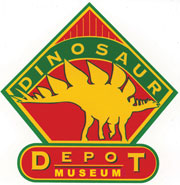 |
Dinosaur Discovery Museum
Opened in 2006, the Dinosaur Discovery Museum features the nation's largest collection of theropod dinosaurs and is the only museum to exclusively focus on the link between birds and meat-eating dinosaurs, one of the most complete known fossil records. The Carthage Institute of Paleontology is housed in the Museum, and it is dedicated to the preparation and conservation of dinosaur fossils.
http://www.kenosha.org/wp-museum/
|
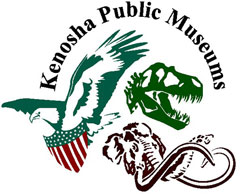 |
Discovery Park of America
The mission of Discovery Park of America is to enhance the educational experience of children and adults and to inspire them to see beyond their current level of knowledge.
https://discoveryparkofamerica.com/
|
 |
Discovery Place
As one of the leading hands-on science centers in the country, Discovery Place offers visitors the opportunity to gain a greater understanding of the basics of science, technology, engineering and mathematics in a fun, interactive and informal setting. Located in one of the nation's fastest growing metropolitan areas, Charlotte, North Carolina, Discovery Place offers a family-friendly experience surrounded by the excitement of a bustling urban community.
We exist to ignite wonder as a preeminent science education center providing extraordinary experiences that engage people in the active exploration of science and nature.
https://www.discoveryplace.org/
|
 |
Douglas County Museum
The purpose of the Museum is to "collect, preserve, interpret and exhibit materials related to the history and natural history of Douglas County". Visitors can expect to experience professional, creative depictions of historical figures and events representing the Umpqua Valley. The rich history our area provides gives the Museum opportunities to exhibit more than ten thousand years of natural and cultural history through detailed dioramas and topical exhibits. The natural history dioramas house native wildlife in richly depicted habitats from the crest of the Cascades to the Pacific Ocean.
http://www.umpquavalleymuseums.org/
|
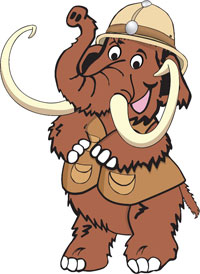 |
The Draper Natural History Museum at the Buffalo Bill Center of the West
The Draper Natural History Museum at the Buffalo Bill Center of the West The Draper Natural History Museum opened to the public on 04 June 2002 to become the newest of the five museums of the Buffalo Bill Center of the West and the first American natural history museum established in the 21st century. Our mission is: "to encourage responsible natural resource stewardship by promoting increased understanding of and appreciation for the relationships binding humans and nature in the Greater Yellowstone Region." Currently, the Draper houses adult and children's classrooms, education office spaces, a photography gallery, a laboratory and collections storage facility, and approximately 30,000 square feet of highly immersive and interactive exhibits in six, interconnected galleries focused broadly on the flora, fauna, geology, and human presence in prominent biomes of the Greater Yellowstone Ecosystem. In addition to exhibits, the Draper Museum fulfills its mission through field exploration and research, collections development, and in-house and field-based educational programming, including a live raptor education program.
https://centerofthewest.org/explore/greater-yellowstone-natural-history/
|
 |
Duluth Children's Museum
The Duluth Children's Museum is a place where children begin their lifelong exploration of an ever-expanding world. The mission of the Duluth Children's Museum is to spark children's curiosity. In all of its creative and educational activities, the Duluth Children's Museum: Respects the sense of play in children and adults, encourages cooperative and inter-generational play, affirms diversity and an appreciation of differences; brings children and families together to encounter new ideas and learning; engages imagination, intellect, emotions and senses in play and learning; and actively maintains a multi-cultural collection as a learning resource.
http://www.duluthchildrensmuseum.org/
|
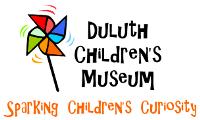 |
Dunn-Seiler Geology Museum at Mississippi State University
The Dunn-Seiler Geology Museum houses mineral and rock collections, meteorites, and extensive fossil displays that facilitate viewer understanding of the 4.6 billion year history of our planet. Visitors can learn about mineral families and properties, igneous, sedimentary, and metamorphic rocks, mass extinctions and asteroids, karst, plate tectonics, and Mississippi's geology. The Dunn-Seiler displays a Triceratops skull replica, a Cretaceous crocodile skull, and many fossils from Mississippi and the Southeast. Over 1,000 visitors, ranging in age from 8 to 70+, visit the Dunn-Seiler every year. While the majority of visitors are school students between grades 3 and 9, the museum has something for everyone.Visit our website for more information.
http://www.geosciences.msstate.edu/dunn-seiler-museum/
|
 |
|
E
|
|
The Earth and Mineral Sciences Museum & Art Gallery at Penn State University
Fossils, Footprints, Minerals, Meteorites, Mining Lamps, Earthquakes, Tornadoes, and Fine Art. The Earth and Mineral Sciences Museum & Art Gallery at Penn State University in State College, Pennsylvania, is a rich resource for informal learning in science and art. The museum’s extensive collections include fossils (vertebrate, invertebrate, ichnological, and botanical), rocks and minerals, historic mining and mine safety artifacts, and the Steidle Collection of American Industrial Art. The museum is an unconventional, easily accessible, and trustworthy venue for disseminating knowledge and communicating complex concepts through the use of real objects, clear language, and informative graphics. The Earth and Mineral Sciences Museum & Art gallery strives to foster a sense of curiosity about the natural and cultural world through exhibitions, educational programs, and outreach activities.
http://www.ems.psu.edu/outreach/museum
|
 |
East Tennessee State University and General Shale Brick Natural History Museum
The East Tennessee State University and General Shale Brick Natural History Museum (Gray, Tennessee) is dedicated to understanding, preserving and interpreting biodiversity of the Southern Appalachians through time, using an interdisciplinary approach. The Natural History Museum seeks to understand and interpret the Gray Fossil Site for people of all ages and origins through scientific research, curriculum-based educational programs, and informal hands-on experiences. The East Tennessee State University and General Shale Brick Natural History Museum and Visitor Center is committed to fulfilling its mission by:
http://gfsm.handsonmuseum.org/
|
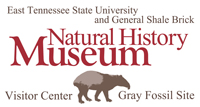 |
Edward L. Clark Museum of Missouri Geology
The Missouri Geological Survey’s Edward L. Clark Museum of Missouri Geology promotes the understanding and appreciation of fossils, rocks, minerals, and the important role geologists play in society. Museum exhibits include a mastodon tusk that was unearthed in the northwest Missouri county of Holt, medals won by the Missouri Geological Survey from the St. Louis, Chicago and San Francisco World’s Fairs. The museum also boasts an impressive display of meteorites, various rocks, minerals and fossils found in Missouri along with geologic maps, tools used by geologists through the years. The museum pays tribute to the Missouri Dinosaur, Hypsibema missouriense, and offers much more to stimulate curiosity and promote enjoyment of learning for the young and young-at-heart.
http://dnr.mo.gov/geology/edclarkmuseum.htm
|
 |
|
F
|
|
Fernbank Science Center
The mission of Fernbank Science Center (Atlanta, Georgia), a unique science resource of the DeKalb County School System and our extended community, is to cultivate an understanding of science and foster a sense of wonder about the natural world by creating a learning environment that incorporates current ideas, methods and technologies.
http://fsc.fernbank.edu/
|
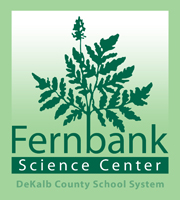 |
Fick Fossil and History Museum
The Fick Fossil and History Museum (Oakley, Kansas) features thousands of locally found fossils and unique folk art made with fossils. We have over 11,000 Kansas found sharks teeth, a 15 foot Xiphactinus Audax and a skull of a Mosasaur! Free Admission Open 6 days a week.
http://www.discoveroakley.com/167/Fick-Fossil-Museum
|
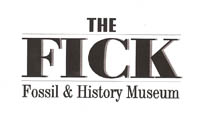 |
Field Museum
With 4.5 billion years under one roof, The Field Museum is your passport to travel around the world and back in time, all without checking a single bag. Meet SUE, the largest and most complete T. rex ever found. Discover things you never knew, and things you never even knew you were interested in.
https://www.fieldmuseum.org/
|
 |
Florida Museum of Natural History
The Florida Museum of Natural History (Gainesville) is Florida's state museum of natural history, dedicated to understanding, preserving and interpreting biological diversity and cultural heritage. https://www.floridamuseum.ufl.edu
|
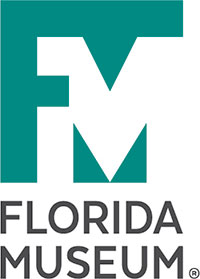 |
The Fort Peck Dam Interpretive Center & Museum
The Fort Peck Dam Interpretive Center & Museum is a partnership between the US Army Corps of Engineers and the US Fish & Wildlife Service. The facility is dedicated to showcasing northeast Montana and recreational opportunities available through the partners on Fort Peck Lake and the surrounding Charles M. Russell National Wildlife Refuge. The facility has numerous paleontology displays focusing on Hell Creek Formation dinosaurs and prehistoric animals including the Peck’s Rex, one of the most complete T.rexspecimens ever found. In addition to the paleontology displays the center also features exhibits on the construction history of Fort Peck Dam, the animals of the Charles. M. Russell National Wildlife Refuge and the largest aquariums in Montana.
https://www.fws.gov/refuge/Charles_M_Russell/visit/visitor_activities/FPIC.html
|
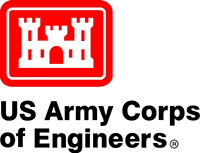 |
Fossil Discovery Center of Madera County
The Fossil Discovery Center of Madera County (California) is dedicated to the education of children and adults of the community about the Pleistocene fossils of the local area. It is one of the largest Middle Pleistocene fossil sites on the West Coast. Guided tours, hands-on exhibits, a mock dig and a "Pleistocene Pond" are popular attractions.
http://www.maderamammoths.org/
|
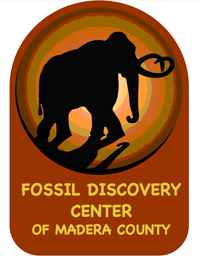 |
Frank H. McClung Museum
The Frank H. McClung Museum seeks to advance understanding and appreciation of the Earth and its natural wonders, its peoples and societies, their cultural and scientific achievements, and the boundless diversity of the human experience. The museum is committed to excellence in teaching, scholarship, community service, and professional practice.
|
 |
Frost Museum of Science
Located in Downtown Miami’s Maurice A. Ferré Park, the Phillip and Patricia Frost Museum of Science is a leading-edge science museum dedicated to sharing the power of science, sparking wonder and investigation, and fueling innovation for the future. Sitting on four acres, the 250,000-square-foot museum divides into four distinct buildings: The Frost Planetarium, Aquarium, and the North and West Wings. At Frost Science, visitors can explore the world of science, technology, engineering and math (STEM) in an experiential setting with interactive exhibitions and unique shows. The museum is accredited by the American Alliance of Museums, is an affiliate of the Smithsonian Institution and a member of the Association of Science and Technology Centers.
https://www.frostscience.org/
|
 |
|
G
|
|
Garden of the Gods Vistor & Nature Center
http://www.gardenofgods.com/
|
|
Garth & Jerri Frehner Museum of Natural History
The Garth and Jerri Frehner Museum of Natural History exists to increase public understanding of the biology, geology, and anthropology of southwestern Utah. The Museum promotes the value of southwestern Utah's natural resources through educational exhibits and tours with a focus on the K-12 audience.
https://www.suu.edu/cose/museum/
|
 |
The Geology Teaching Museum at Appalachian State University
The F. Kenneth & Marjorie J. McKinney Geology Teaching Museum is a teaching and outreach initiative of the Department of Geology at Appalachian State University. The Museum features 1,200 square feet of exhibit space. Exhibits include display cases full of specimens, the Rankin Rock Wall, and an outdoor interactive rock garden. The Rankin Rock Wall includes 103 rock specimens documenting the geologic history of the Appalachian region, including examples of igneous, sedimentary, and metamorphic rocks as well as diverse geologic structures.
|
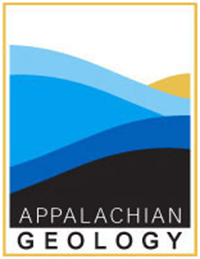 |
Georgia Southern University Museum
The Georgia Southern University Museum interprets the natural and cultural history of coastal plain Georgia. Permanent exhibits take you back 100 million years, to a time when mosasaurs prowled the oceans. Each display will bring you closer to the present day. Along the way, you will learn about the dramatic environmental changes in Georgia and how they affected the animals that once lived here. Younger visitors can "be a paleontologist" excavating and studying fossils from different sites in south Georgia. Featured in the exhibits are Tylosaurus proriger, a 78 million-year-old marine reptile and Georgiacetus vogtlensis, a 40 million-year-old whale, whose pelvic bones helped establish a missing link between land mammals and whales. The Museum features special exhibits that also often focus on fossils and paleontology.
http://academics.georgiasouthern.edu/museum/
|
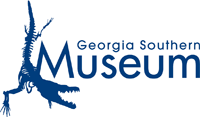 |
Great Basin Museum
Come visit us at the Great Basin Museum, where the past meets the future in a unique way not be apparent anywhere else: Where you can gaze into the distant past at some of the oldest rocks to be found in Utah or anywhere else in the world; see fossils that actually took part in the "Cambrian Explosion" - that unexpected flowering of life that is still a puzzle and still explored by leading paleontologists today.
https://greatbasinmuseum.com/
|
 |
Great Plains Dinosaur Museum and Field Station
“To curate and prepare paleontological resources for use in educational programs, scientific research and interpretive displays in support of the advancement of knowledge and the benefit of all people.”
Our visitors can view world class fossils from this area of Montana in our gallery including Stegosaurus, sauropod, crocodile, Hadrosaurs, and many marine fossils. The Great Plains Dinosaur Museum conducts dig programs in the summer for adults and a Junior Paleontology program for children from 6-12.
http://www.greatplainsdinosaurs.org/
|
 |
|
H
|
|
Harvard Museum of Natural History
With a mission to enhance public understanding and appreciation of the natural world, the Harvard Museum of Natural History (Cambridge, Massachusetts) presents to the public Harvard's natural history collections and research of scientists across the University.
http://hmnh.harvard.edu/
|
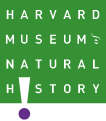 |
Heard Natural Science Museum and Wildlife Refuge (McKinney, TX)
The Heard Natural Science Museum & Wildlife Sanctuary, in Mckinney Texas, is the result of one woman's vision for the future and her commitment to the community and North Texas. Miss Bessie Heard devoted most of her lifetime (1886-1988) to the city of McKinney and its people. Her greatest contribution to her community and North Texas is the Heard Natural Science Museum & Wildlife Sanctuary. The museum opened October 1, 1967 and now serves more than 100,000 visitors annually.
In keeping with Miss Heard's vision, the museum's mission is threefold: education, conservation and preservation. Through education, particularly for young people, the Heard emphasizes an appreciation of nature and its conservation.
http://www.heardmuseum.org/
|
 |
Houston Museum of Natural Science
The mission of the Houston Museum of Natural Science shall be to preserve and advance the general knowledge of natural science; to enhance in individuals the knowledge of and delight in natural science and related subjects; and to maintain and promote a museum of the first class. Founded in 1909, the purpose of the Houston Museum of Natural Science has always been to "enhance in individuals the knowledge and delight in natural science and related subjects." This purpose is being expanded as the Museum doubles its size next summer with the opening of our new wing, to be home to many more dinosaurs in Houston.
http://www.hmns.org/
|
 |
|
I
|
|
Idaho Museum of Natural History
The Idaho Museum of Natural History (Pocatello) actively nurtures an understanding of and delight in Idaho's natural and cultural heritage. As the official state museum of natural history, it acquires, preserves, studies, interprets and displays natural and cultural objects for Idaho residents, visitors and the world's community of students and scholars. The Museum also supports and encourages Idaho's other natural history museums through mentoring and training in sound museological practices.
http://imnh.isu.edu/home/
|
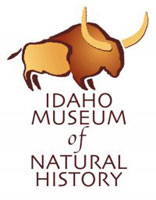 |
Illinois State Museum
The Illinois State Museum (Springfield) promotes discovery, learning, and an appreciation of Illinois' natural, cultural, and artistic heritage. Over 200,000 specimens are curated in its geology collections, including 60 type and figured invertebrates, 6 fish types, and over 600 type and figured plant fossils. Also represented is a strong collection of Carboniferous fossils from the scientifically and nationally significant Mazon Creek and Rock Island areas of Illinois. The vertebrate paleontology collection is one of the best Late Quaternary mammal fossil collections (50,000+ specimens) in North America; it is especially rich in Pleistocene-aged fossils from the American Midwest.
http://www.museum.state.il.us/
|
 |
Imagination Station Science & History Museum
Imagination Station Science & History Museum exists to stimulate an interest in science, technology, and history while improving the quality of informal science education through dynamic hands-on science learning. Through outreach, interactive programs and exhibits, Imagination Station is committed to serving as a major educational resource center for eastern North Carolina families, school systems, educators, and students. Imagination Station seeks to enable people of all ages to discover the impacts and future of science and technology on their daily lives.
http://scienceandhistory.org/home
|
 |
Indiana State Museum
The Indiana State Museum and Historic Sites preserves, interprets and presents material evidence of Indiana’s cultural and natural history in a context that encourages people to actively participate in discovering the world — as it was, as it is and as it can be.
The museum and sites display collections that tell Indiana’s story and celebrate the state’s achievements through the arts, culture and sciences by featuring a dynamic schedule of changing exhibitions and programs. Annual attendance at the museum and sites for 2009 totaled 659,004 visitors including paid/unpaid attendance to special events and related outreach, public programs and workshops. The museum serves approximately 60,000 K–12 students each year and offers free admission to all Indiana teachers and to all schools where 40 percent or more of the students receive free or reduced lunch.
The Indiana State Museum is the soul of Indiana ... where science and culture meet for adventure and learning. Spend some time with us! You'll be so glad you did.
http://www.indianamuseum.org/
|
 |
|
J
|
|
Jacksonville Museum of Science and History
The Jacksonville Museum of Science & History (MOSH) in Florida inspires the joy of lifelong learning by bringing to life the sciences and regional history.
http://themosh.org/
|
 |
Joseph Moore Museum of Natural History
Associated with Earlham College in Richmond, Indiana, the Joseph Moore Museum features public exhibits emphasizing our local Ordivician and Pleistocene deposits. Mounts includes a mastodon, giant ground sloth, sabertooth cat, dire wolf, and the only nearly complete giant Pleistocene beaver in the world. Admission is free.
http://www.earlham.edu/joseph-moore-museum/
|
 |
|
K
|
|
Kansas University Natural History Museum
The KU Natural History Museum (Lawrence) focuses on the biological diversity of the Great Plains. Fossil exhibits profile extinct mammals, dinosaurs, reptiles and fish. The museum's panorama, one of the world's largest dioramas, features scenes ranging from arctic to tropical habitats. Living exhibits include a working beehive and Kansas snakes and fish. The museum is home to Comanche, a U.S. Seventh Cavalry horse that survived the 1876 Battle of the Little Bighorn, and a 60-foot-long Mosasaur - one of the great "sea monsters" of Kansas.
https://biodiversity.ku.edu/
|
 |
Kenosha Public Museum
The Kenosha Public Museum has been serving the city of Kenosha for 75 years with exhibits that focus on world cultures, Native Americans, zoology, geology, fossils, and fine and decorative arts. Centerpieces of the collections are the 14,500 year old Schaefer mammoth and the Hebior mammoth, the largest, most complete mammoth discovered to date.
http://www.kenosha.org/wp-museum/
|
 |
|
L
|
|
L.C. Bates Museum
Community education is the heart of the L. C. Bates mission. The mission of the L. C. Bates Museum is to inspire wonder, knowledge and understanding of the natural world and human cultural environments. We accomplish our mission by providing educational programs and exhibits. The Museum, a unit of Good Will-Hinckley Homes, is an ideal place for gaining knowledge about Maine’s environment, geology and fossils and activating students’ interest in the arts and our natural world. The three-story Romanesque Revival museum houses an early 20th century museum, complete with 32 Maine habitat dioramas, art exhibits, a small observatory and 9 galleries of natural history objects. Behind the museum are trails that lead to varied field, forest and wetland habitats; a microcosm of our varied regional environment. The museum resources are used to offer engaging activities that address ME Learning Results and nurture a lifelong connection to the outdoors and our regional heritage. The museum offers tours, museum programs and outreach programs to schools and organizations.
http://www.gwh.org/lcbates/LCBatesMuseum.aspx
|
 |
Las Cruces Museum of Nature & Science
The Las Cruces Museum System aims to provide a welcoming environment for the curious so they can gain new insights and experience personal and community enrichment. The Museum of Nature & Science is about looking and understanding - looking up to the stars, looking out to the desert, and looking down to see ancient fossils.
http://museums.las-cruces.org/1608/Museum-of-Nature-Science
|
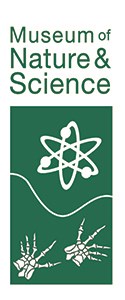 |
Las Vegas Museum of Natural History
The Las Vegas Natural History Museum is a private, non-profit institution dedicated to educating the children, adults and families of the community in the natural sciences- both past and present. Through its interactive exhibits, educational programs and the preservation of its collections, the Museum strives to instill an understanding and appreciation of the world's wildlife, ecosystems and cultures.
http://www.lvnhm.org/
|
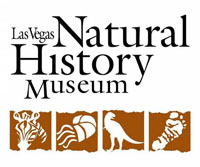 |
The Lyman Museum
The Smithsonian-affiliated Lyman Museum tells the story of Hawaii's islands and people through its exhibits on Hawaii's volcanic origins, flora and fauna found nowhere else in the world, Hawaiian culture, and other ethnic groups that have shaped the unique society of Hawaii today. Admire worldwide collections of sea shells and minerals. Learn about 19th century missionary life on a tour of the historic Lyman Mission House, the Island's oldest wood frame building constructed in 1839.
http://lymanmuseum.org/
|
 |
|
M
|
|
McClung Museum of Natural History and Culture
The mission of the McClung Museum is to advance understanding and appreciation of the earth and its peoples through the collection, preservation, study, interpretation, and exhibition of objects and data. As a part of the University of Tennessee, the museum works to support academic programs and provide educational programming.
http://mcclungmuseum.utk.edu/
|
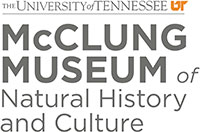 |
Mace Brown Museum of Natural History
A museum collections facility with the College of Charleston specializing in the paleontology of the low country of South Carolina.
http://geology.cofc.edu/natural-history-museum/
|
 |
Maryland Science Center
The Mission of the Maryland Science Center (Baltimore) is to create awareness in everyone of the importance of science in our lives by engaging them with exciting educational experiences. It is also to motivate our youth to pursue careers in science and technology through community collaboration with academia, government, and industry.
http://www.mdsci.org/
|
 |
Mayborn Museum
Engaging our community and inspiring life-long learning through our rich collections, vibrant programs, and hands-on experiences.
http://www.baylor.edu/mayborn/
|
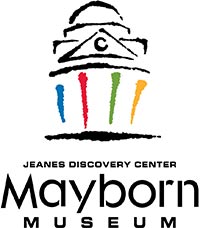 |
Mesalands Community College's Dinosaur Museum
The Mesalands Community College's Dinosaur Museum and Natural Sciences Laboratory located in Tucumcari, New Mexico, is home to the world's largest collection of life-size bronze dinosaur skeletons. The bronzes are created through the Fine/Arts Bronze program at Mesalands Community College. The Museum is the result of a combined effort by Mesalands Community College and the Tucumcari community to create a museum where genuine fossils collected in eastern New Mexico can be exhibited.
http://www.mesalands.edu/community/dinosaur-museum/
|
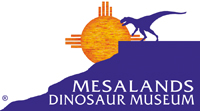 |
Michigan State University Museum
Michigan State University Museum (East Lansing) is committed to understanding, interpreting, and respecting natural and cultural diversity. As Michigan's land-grant university museum, this commitment to society is met through education, exhibitions, research, and the building and stewardship of collections that focus on Michigan and its relationship to the Great Lakes, and the world beyond.
http://museum.msu.edu/
|
 |
Milwaukee Public Museum
The Milwaukee Public Museum inspires curiosity, excites minds and increases desire to preserve and protect our world's natural and cultural diversity through exhibitions, educational programs, collections and research.
https://www.mpm.edu/
|
 |
Mississippi Museum of Natural Science
The mission of the Mississippi Museum of Natural Science (Jackson) is to promote understanding and appreciation of Mississippi’s biological diversity through collections, research, scientific databases, education, and exhibits; and to inspire the people of our state to respect the environment and to preserve natural Mississippi.
http://www.mdwfp.com/museum.aspx
|
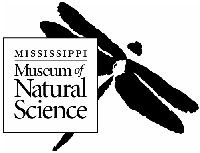 |
Missouri Institute of Natural Science
The mission of the Missouri Institute of Natural Science is to interpret Missouri’s natural history within a regional and global context in a manner that is relevant, useful, educational and entertaining to all patrons.
http://www.monatsci.org/
|
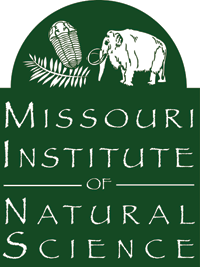 |
Moab Giants
Not only is it set amongst some of the world’s most breathtaking scenery in Moab, Utah, but it’s a unique experience of the ages. Make your own tracks alongside our state-of the art, life-size dinosaurs in the land they called home! Moab Giants is the ultimate place to discover the past with cutting edge technology that feels like the future! Visit the newest dinosaur museum in Utah!
https://moabgiants.com/
|
|
Morrison Natural History Museum
Discover Colorado's dinosaurs with expert guides and hands-on exhibits at Jefferson County's original paleontology museum in Morrison. Encounter historic and modern fossil finds and see research in progress at the Paleo Lab. A visit is the perfect orientation to the Red Rocks and Dinosaur Ridge areas. Morrison Natural History Museum offers a glimpse of the first important dinosaur discoveries in Colorado including fossils from the first Stegosaurus and Apatosaurus ever discovered. The 3,000 square foot exhibition offers an overview of local life history in context of area geology. Many of the fossils and fossil casts on display are touchable. The Museum continues to actively research local Jurassic ecosystems. Recent excavations have yielded famous baby dinosaur footprints that have been featured in Smithsonianmagazine and media outlets around the world. Exploration continues. Join us!
http://www.mnhm.org/246/Morrison-Natural-History-Museum
|
 |
Mulberry Phosphate Museum
As you walk through our museum, you will experience the Earth’s past, viewing the remains of various types of marine life as well as reptiles and mammals dating back millions of years. Your visit will be an introduction to the relationship of animal remains with the modern Phosphate Industry.
Our Phosphate Gallery, located in a set of renovated boxcars, is designed to inform visitors of the various types of phosphate and the industry. You will learn where phosphate is found, how it is mined and processed, and how we use it in our everyday lives. The Historic Railroad Gallery, located in the second set of boxcars, provides historic photos and information on the City of Mulberry, Polk County, the Railroad Industry, and the Phosphate Industry. The museum also boasts a 1949 caboose which visitors can walk through and explore.
The Fossil Gallery is located in the historic 1939 train depot. The gallery displays the natural wonders of Florida’s natural history. Fossils ranging back as far as 100 million years are on display for all to enjoy. Animals such as mastodon, giant sloth, and megalodon once called the area that would later be known as “Bone Valley” home. In this gallery, guests can see the remains discovered throughout the area.
http://www.mulberryphosphatemuseum.org/
|
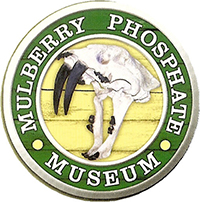 |
Museum of Ancient Life at Thanksgiving Point
The Museum of Ancient Life at Thanksgiving Point (Lehi, Utah) hosts one of the world's largest displays of mounted dinosaurs with 60 complete skeletons in the galleries, along with 50 hands-on exhibits. Guests get to roam with dinosaurs, explore a Carboniferous Forest, and dive deep into a Cretaceous Ocean. Other interactive activities include playing with toy dinosaurs in the Erosion Table, digging for fossils in the quarry dig, and watching a 3D movie in the Mammoth Screen. Guests can even spend an evening at the museum at the monthly Late Night with Rex. Whether coming by day or by night, the Museum of Ancient Life provides a lively adventure for all ages.
https://www.thanksgivingpoint.org/experience/museum-of-ancient-life/
|
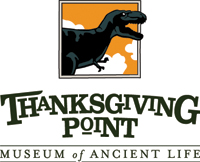 |
Museum of Life + Science, Durham, North Carolina
Situated on 84 acres, the Museum of Life and Science interactive science park includes a hands-on science center, immersive butterfly conservatory, over 60 species of live animals, a life-sized dinosaur trail and more! The Museum’s Dinosaur trail takes visitors on a journey through the Late Cretaceous period and features 14 dinosaurs as well as an interactive fossil dig site where guests are invited to identify and keep their marine fossil finds.
http://www.lifeandscience.org/
|
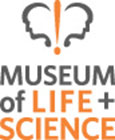 |
Museum of Moab
The mission of the Museum of Moab is to preserve and display artifacts and information, and to promote research and education, which accurately reflect the natural and cultural history of the Moab area.
http://www.moabmuseum.org/
|
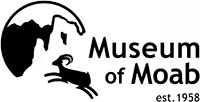 |
Museum of Natural History, Providence RI
The Museum of Natural History is Rhode Island's only natural history museum and home to the state's only public planetarium. Located in historic Roger Williams Park, the Museum has been educating and serving the public since 1896. With thematic exhibits and programs that draw on our worldwide collections, along with the Cormack planetarium, there is something here for everyone. The Museum is home to more than a quarter million treasures that encompass both the natural and cultural worlds.
|
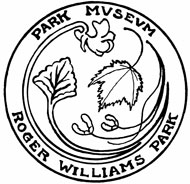 |
Museum of Northern Arizona
The mission of the Museum of Northern Arizona (Flagstaff) is to inspire a sense of love and responsibility for the beauty and diversity of the Colorado Plateau through collecting, studying, interpreting, and preserving the region’s natural and cultural heritage.
http://musnaz.org/
|
 |
Museum of the Rockies
The Museum of the Rockies (Bozeman, Montana) inspires visitors to explore the rich natural and cultural history of America's Northern Rocky Mountains. In partnership with Montana State University, the Museum reaches diverse communities with engaging exhibits, educational programs, and original research that advance public understanding of the collections.
https://www.museumoftherockies.org/
|
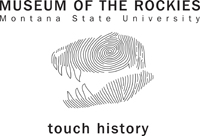 |
Museum of Science
The Museum of Science, in Boston, is one of the world's largest science centers, annually attracting over 1.5 million visitors who explore science, technology, engineering, and math (STEM) through dynamic hands-on programs and hundreds of interactive exhibits. Compare fossils spanning geologic time—from billion-year-old stromatolites to mammoth and mastodon teeth less than 2.6 million years old. Our many dinosaur fossils include footprints, skulls from T. rex and Giganotosaurus, and two Triceratops skeletons (one a cast, the other one of only four nearly complete skeletons on public display in the world). We also feature fossils from ancient plants, insects, and marine invertebrates such as trilobites, ammonites, and brachiopods. We hope you enjoy fossil hunting in our Exhibit Halls!
https://www.mos.org/
|
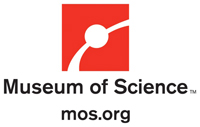 |
Museum of Texas Tech University
The Museum is an educational, scientific, cultural, and research element of Texas Tech University (Lubbock). It is a not-for-profit institution by virtue of being a part of Texas Tech University. The Museum's purpose is to support the academic and intellectual mission of Texas Tech University through the collection, preservation, documentation, and research of scientific and cultural material and to disseminate information about those collections and their scientific and cultural topics through exhibition, interpretation, and publication for primary, secondary, and higher education students, the scholarly community, and the general public.
http://www.depts.ttu.edu/museumttu/
|
 |
Museum of Western Colorado
The Museum of Western Colorado (Grand Junction) is the largest multi-disciplinary museum between Salt Lake City and Denver. Over the past forty years the Museum has grown to include three major museum facilities, three active outdoor paleontology sites, an educational center and a respected research library. The Museum's educational goal is to inspire students of all ages to develop and extend their awareness, appreciation and understanding of western Colorado.
https://museumofwesternco.com/
|
 |
|
N
|
|
Natural History Museum of Los Angeles County
The mission of the Natural History Museum of Los Angeles County is to inspire wonder, discovery and responsibility for our natural and cultural worlds.
https://www.nhm.org/site/
|
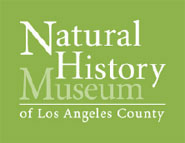 |
New Jersey State Museum
The New Jersey State Museum (Trenton) serves the life-long educational needs of residents and visitors through its collections, exhibitions, programs, publications and scholarship in science, history and the arts. Within a broad context, the Museum explores the natural and cultural diversity of New Jersey, past and present.
http://nj.gov/state/museum/index.html
|
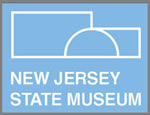 |
Nevada State Museum, Las Vegas
The mission of the Nevada State Museum, Las Vegas is to inspire and educate a diverse public about the history and natural history of Nevada. To fulfill that mission, we collect, preserve, exhibit, and disseminate material that contributes to an understanding and appreciation of the state.
http://nvdtca.org/museums/
|
 |
New Mexico Museum of Natural History & Science
The mission of the New Mexico Museum of Natural History and Science (Albuquerque) is to foster an understanding and appreciation of the diverse natural history and physical sciences of New Mexico and the Southwest for the benefit of residents of, and visitors to, New Mexico. The Museum provides educational experiences and promotes scientific inquiry through focused collections, research, public programs and exhibitions.
http://www.nmnaturalhistory.org/
|
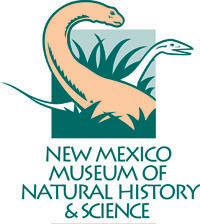 |
North Carolina Museum of Natural Sciences
Featuring an array of permanent and special exhibits, live programs and educational films that appeal to audiences of all ages, the North Carolina Museum of Natural Sciences in downtown Raleigh encourages visitors to explore the natural world and their connections to it. The Museum is open seven days a week and general admission is free.
http://naturalsciences.org/
|
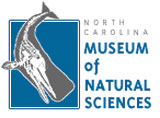 |
|
O
|
|
Omaha Children's Museum
Our mission is "To engage the imagination and create excitement about learning"
http://www.ocm.org/
|
 |
Orlando Science Center
Orlando Science Center's mission is to inspire science learning for life. The Science Center strives to create lasting impacts on science, technology, engineering and math (STEM) education to develop the next generation of creative innovators to fuel the global economy. Fully accredited by the American Association of Museums, the Science Center ranks as the most popular museum destination in the region. Having served more than four million people and provided field trip experiences to more than 800,000 school children since the current facility debuted in 1997, the Science Center offers rich resources for lifelong learning.
http://www.osc.org/
|
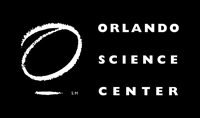 |
|
P
|
|
The Page Museum (La Brea Tar Pits)
The Page Museum is located at the Rancho La Brea Tar Pits in the heart of Los Angeles. Rancho La Brea is one of the world’s most famous fossil localities, recognized for having the largest and most diverse assemblage of extinct Ice Age plants and animals in the world. Visitors can learn about Los Angeles as it was between 10,000 and 40,000 years ago, during the last Ice Age, when animals such as saber-toothed cats and mammoths roamed the Los Angeles Basin. Through windows at the Page Museum Laboratory, visitors can watch bones being cleaned and repaired. Outside the Museum, in Hancock Park, life-size replicas of several extinct mammals are featured.
http://www.tarpits.org/
|
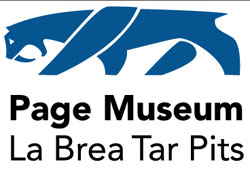 |
Paleontological Research Institute - Museum of the Earth (PRI)
The Paleontological Research Institution pursues and integrates education and research, and interprets the history and systems of the Earth and its life, to increase knowledge, educate society, and encourage wise stewardship of the Earth. Founded in 1932, the Paleontological Research Institution has outstanding programs in research, collections, publications, and public education. One of PRI’s public education venues, Museum of the Earth was established in 2003 to provide the general public with a unique opportunity to explore our world through a mix of natural history displays, interactive science features, and art exhibitions. The museum’s 8,000-square-foot permanent exhibition takes visitors on a journey through 4.5 billion years of history, from the Earth’s origin to the present day. Through hands-on, visual exhibitions and outreach, the Museum of the Earth encourages critical thinking about life on Earth in the past and today, and how our species is affecting the natural world. In 2013, the Cayuga Nature Center became PRI's newest public venue for education. The Nature Center cultivates an awareness, appreciation, and responsibility for the natural world through outdoor and environmental education.
http://www.priweb.org/
|
 |
Panhandle-Plains Historical Museum
Explore more than 500 million years of history across a 26,000 square mile expanse of the Panhandle-Plains—all under one roof in Canyon, Texas. PPHM is the largest history museum in Texas and holds more than 2 million artifacts in collections including western heritage, art, textiles, archeology, paleontology, transportation and petroleum.
http://panhandleplains.org/pages/home.asp
|
 |
Peggy Notebaert Nature Museum
The Chicago Academy of Sciences and its Peggy Notebaert Nature Museum serves as an urban gateway to nature and science. Located in an eco-friendly building amidst abundant wildlife and nature in Lincoln Park, hands-on exhibitions allow visitors of all ages to connect with regional wildlife and public programs that inspire green living and sustainability. With a history that spans more than 150 years, the Academy’s conservation efforts study, explore and protect urban wildlife and the unique natural history of the Great Lakes region. Today, collaborative conservation programs include citizen science initiatives, native habitat restoration and one of the region’s largest environmental education programs.
http://www.naturemuseum.org/
|
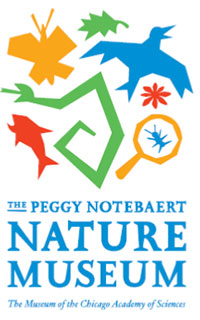 |
Perot Museum of Nature and Science
Let the exploration begin at the Museum of Nature & Science! Visitors of all ages can unearth buried fossils, solve DNA mysteries, test the laws of physics or contemplate the vastness of outer space. Immerse yourself in our 79-foot domed IMAX® Theater. As part of our new building we have stunning exhibits on the dinosaur paleontology of Big Bend National Park and Denali National Park. Discover the wonders of the universe in our planetarium. Learn about the creatures that share our planet now, and the ones that came millions of years before us. Preview on-line—read about our fieldwork, and see images the Alamosaurus skeleton from Big Bend National Park and the footprint display from Denali National Park in our new fossil hall exhibits.
http://www.perotmuseum.org/
|
 |
Pink Palace Family of Museums
The Pink Palace Family of Museums (Memphis, Tennessee) inspires people to learn how history, science, technology, and nature shape the Mid-South. Through rich collections, thought-provoking exhibitions, and engaging programs, we encourage our diverse community to reflect on the past, understand the present, and influence the future.
http://www.memphismuseums.org/
|
 |
Pratt Museum
The Pratt Museum (Homer, Alaska) is dedicated to the process of education by exploring the natural environment and human experience relative to the Kachemak Bay region of Alaska and its place in the world. The Museum seeks to inspire self-reflection and dialogue in its community and visitors through exhibitions, programs, and collections in the arts, sciences and humanities.
http://www.prattmuseum.org/
|
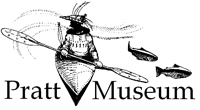 |
The Prehistoric Museum
The Prehistoric Museum in Price, Utah, creates understanding and appreciation of natural and cultural processes that formed the geologic, fossil and prehistoric human records found in eastern Utah. We do this through educational and interpretive programs based upon our academic research, preservation programs, authentic exhibits, and the creative efforts of our staff and community.
http://144.39.2.208/museum/index.htm
|
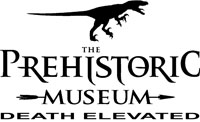 |
Q
|
|
El Quartelejo Museum
The theme of El Quartelejo Museum is a developing timeline; one which traces the history of this region of western Kansas through the stories told by the fossil discoveries on exhibit to present day Scott County information. Appeal for both adults and children has been achieved. Exhibits allow youngsters to touch and even “dig” for their own fossils.
http://www.elquartelejomuseum.org/
|
 |
|
R
|
|
Raymond M. Alf Museum of Paleontology
The mission of the Raymond M. Alf Museum of Paleontology (Los Angeles) is to stimulate interest in the sciences through appreciation for and application of the scientific method of inquiry in the field of paleontology. In fulfillment of this mission, the Alf Museum:
- Provides a unique paleontological curricular ingredient to The Webb Schools via classes, field expeditions and research
- Serves the Los Angeles metropolitan area as an educational science resource through exhibits, tours, open houses, website programming and off site presentations focused primarily on elementary school students
- Conserves a well-documented, research-quality, and ever-expanding collection of paleontological specimens, primarily from the western United States
-
Acts as a center of paleontological education and research for the scientific community.
http://www.alfmuseum.org/
|
 |
Reading Public Museum
The mission of the Reading Public Museum, a dynamic center of lifelong learning and discovery, is to educate, enlighten and engage current and future generations through the collection, preservation and interpretation of objects of art, science and civilization.
http://www.readingpublicmuseum.org/
|
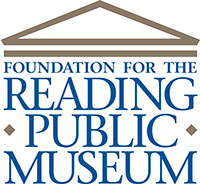 |
Rhode Island Museum of Natural History and Planetarium
http://providenceri.com/museum
|
|
Rice Northwest Museum of Rocks and Minerals
The Rice Northwest Museum of Rocks and Minerals exists to engage, inspire, and educate generations on the splendor and complexities of our Earth.
https://ricenorthwestmuseum.org/
|
 |
Rochester Museum and Science Center
The Rochester Museum & Science Center stimulates broad community interest and understanding of science and technology, and their impact - past, present, future - on our lives.
http://www.rmsc.org/
|
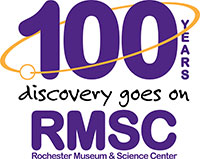 |
Rocky Mountain Dinosaur Resource Center
Where do dinosaurs come from? They come from here! One of the most interesting destinations you will find in the American West is the Dinosaur Resource Center in Woodland Park, Colorado. With more than 40 full size skeletons and life restorations to see, RMDRC is packed with awe-inspiring displays. You'll find a working paleo lab where ongoing fossil preparation, restoration, molding, casting and mounting can be viewed as part of your tour. The dinosaur hall features our "Tiny Tyrants" exhibit including Bambiraptor, Oviraptor and Dromaeosaurus. Of course we have the largest Cretaceous carnivore, our 40 foot Tyrannosaurus rex. The world's foremost collection of Kansas marine specimens is also on display. Sea Monsters such as a 45 foot Tylosaurus, 17 foot Xiphactinus and 42 foot Elasmosaurus are the stars of the Marine Hall. You can wander among the displays on your own but try to take one of the guided tours (no extra charge) with our knowledgeable Visitor Experience Guides. Either way the guides will answer your questions and make your visit a truly educational and enjoyable experience.
http://www.rmdrc.com/
|
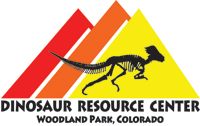 |
Royal Gorge Regional Museum and History Center
The Royal Gorge Regional Museum and History Center’s mission is to collect, preserve, and interpret the history of our region for future generations.
www.museum.canoncity.or
|
 |
The Rutgers Geology Museum
The Rutgers Geology Museum (New Brunswick, New Jersey) enhances university teaching and outreach programs through its presentations of geological, mineralogical, paleontological, and anthropologic materials for the education and enjoyment of its visitors. Through its exhibits, collections, public lectures, tours and other programs, the Museum provides our undergraduate students, members of the University community, K12 students and teachers, and the general public with unique learning experiences that enhance their understanding of the natural world.
http://geologymuseum.rutgers.edu/geology-museum
|
 |
|
S
|
|
Sam Noble Oklahoma Museum of Natural History
The Sam Noble Oklahoma Museum of Natural History at The University of Oklahoma (Norman) inspires minds to understand the natural and cultural world through collection-based discovery, interpretation, and education.
http://samnoblemuseum.ou.edu/
|
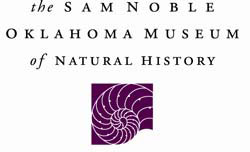 |
San Bernardino County Museum
The San Bernardino County Museum (California) maintains and develops unique cultural and natural science collections related to our region and the greater Southwest. Through responsible collection, preservation, exhibition, and education, we inspire the public to a deeper understanding of our cultural and natural history.
http://www.sbcounty.gov/museum/
|
 |
San Diego Museum of Natural History
The mission of the San Diego Natural History Museum is to interpret the natural world through research, education and exhibits; to promote understanding of the evolution and diversity of southern California and the peninsula of Baja California; and to inspire in all a respect for nature and the environment.
http://www.sdnhm.org/
|
 |
Saint Louis Science Center
The roots of the Saint Louis Science Center go back to 1856 with the founding of the The Academy of Science of Saint Louis, the first scientific organization west of the Mississippi River. Its mission of 'igniting and sustaining lifelong science and technology learning' is the foundation for the more than 600 interactive exhibits, annual traveling exhibits and array of educational programming for all audiences. Whether it's paleontology astronomy, engineering or genetics there's something to stimulate the explorer and scientist in everyone.
http://www.slsc.org/
|
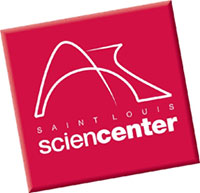 |
Sanford Museum and Planetarium
The Sanford Museum and Planetarium's (Cherokee, Iowa) purpose is to collect, preserve, study and interpret cultural, historical and other significant materials relating to Northwest Iowa and secondarily to the State of Iowa, and to provide educational exhibits and services for the purpose of expanding and enriching public knowledge.
http://sanfordmuseum.org/
|
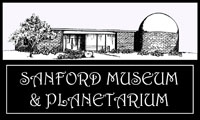 |
Science Museum of Long Island
The Science Museum of Long Island is a not-for-profit science activity center located on Leeds Pond Preserve in Nassau County (New York). Our mission is to stimulate and nurture children’s natural interest in science by providing science education through hands-on learning. The museum offers traditional, classroom based science lessons as well as outdoor experiences that utilize the forest and Manhasset Bay.
http://www.smli.org/
|
 |
Science Museum of Minnesota
The Science Museum of Minnesota (St. Paul) is among the nation's largest and most esteemed science museums. The m useum conducts research, collects and preserves artifacts, produces and distributes award-winning exhibits and giant screen films, and offers educational programs for children, families, and adults. The mission of the Science Museum's Paleontology program is to collect, research, and care for the fossilized remains of past life, as well as to promote the professional and public understanding of extinct and modern life on Earth. Science Museum paleontology staff conduct original research, collect new data through field and lab-based explorations, preserve fossils through curation of our collection, and bring paleontology to the public through exhibits and educational programming.
https://www.smm.org/
|
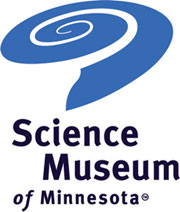 |
Science Museum of Virginia
Science Museum of Virginia's (Richmond) mission is to Inspire Virginians to enrich their lives through science.
http://www.smv.org/
|
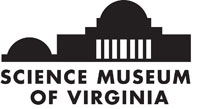 |
Sheridan College Science Museum of Discovery
The Sheridan College Museum of Discovery strives to be recognized as a catalyst to increase public awareness of and appreciation for scientific concepts and research. The museum recognizes the importance of engaging students of all ages throughout the community in high quality and engaging educational experiences to foster this understanding. The purpose and mission of the museum is to be guided by a philosophy of scientific accuracy to preserve and advance scientific knowledge, and to enlighten and educate the public.
|
 |
The Sherman Museum
We acquire, preserve, interpret and display items of enduring cultural, historical and educational value related to Grayson County and the local Red River area. We embrace our responsibility to engage and educate our community, enriching lives by promoting historical awareness, fostering research through shared knowledge, and encouraging interaction through exhibitions, programs and service events.
http://theshermanmuseum.org/
|
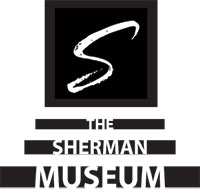 |
Smithsonian National Museum of Natural History
We inspire curiosity, discovery, and learning about nature and culture through outstanding research, collections, exhibitions, and education. The museum is one of the Smithsonian Institution museums in Washington, DC.
https://naturalhistory.si.edu/
|
 |
South Carolina State Museum
Through innovative partnerships, comprehensive collections, and stimulating exhibits and programs, The South Carolina State Museum provides educational environments that entertain, inspire imagination and creativity, and enrich the lives of visitors.
http://scmuseum.org/
|
 |
South Dakota School of Mines and Technology - Museum of Geology
The mission of the Museum of Geology (Rapid City) is to collect, conserve, curate, interpret, exhibit, and disseminate knowledge of paleontologically and geologically significant objects and serve as the repository for such objects from South Dakota and the Northern Great Plains, as well as from other areas that enhance our understanding of South Dakota paleontology and geology.
http://www.sdsmt.edu/Academics/Museum-of-Geology/Home/
|
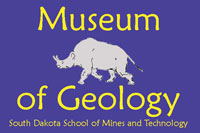 |
South Florida Museum, Bishop Planetarium & Parker Manatee Aquarium
South Florida Museum is the largest natural and cultural history museum on Florida’s Gulf Coast. The museum interprets the region from the Pleistocene to the present. Highlights include fossil evidence of Florida’s earliest mammals and marine species and the Montague Tallant collection of prehistoric and early post-contact archeological artifacts. Recently opened is the Environmental Wing focusing on Florida's ecology and bio-diversity in the Pine Uplands and Riverine Galleries.
http://www.southfloridamuseum.org/
|
 |
The State Museum of Pennsylvania
The State Museum of Pennsylvania (Harrisburg) is dedicated to the collection, preservation and interpretation of plant and animal fossils from Pennsylvania, United States and around the world. The museum actively promotes the importance of our fossil heritage through fieldwork, exhibits and scientific publication. The museum serves as the official repository for fossils acquired by the Pennsylvania Topographic and Geologic Survey. The Section of Paleontology and Geology has a vast paleobotanical collection from the world-famous anthracite coal region of Pennsylvania and an extensive collection of Middle Devonian marine invertebrates. Notable fossil vertebrate collections include Late Devonian fishes from northcentral Pennsylvania, Late Triassic vertebrates from southeastern Pennsylvania, and Late Cretaceous vertebrates from New Mexico. The museum is the home of the Marshalls Creek Mastodon, one of the most complete mastodon specimens on the East Coast.
http://statemuseumpa.org/
|
 |
Sternberg Museum of Natural History
The Sternberg Museum (Hays, Kansas) is dedicated to enriching students, children, and adults of all ages through educational exhibits and programs, while also providing support to the Fort Hays State University. The Sternberg Museum also encourages those who wish to pursue careers in preservation, maintenance, exhibitions, and administration of museum collections by offering a variety of informal training programs.
http://sternberg.fhsu.edu/
|
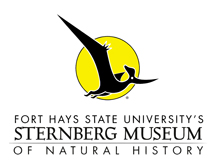 |
Stratford Hall
Stratford Hall is a historic site and museum in Virginia with an interesting fossil connection. The site is situated on very fossiliferous Miocene marine sediments of the Chesapeake Bay area. Stratford Hall joined the NFD partnership to promote educational outreach about the fossils that are widespread both within and around the historic site.
MISSION STATEMENT: Stratford Hall preserves the legacy of the Lee family and its plantation community, inspires an appreciation of America’s past, and encourages commitment to the ideals of leadership, honor, independent thought and civic responsibility.
http://www.stratfordhall.org/
|
 |
|
T
|
|
Tate Geological Museum
The mission of the Tate Geological Museum at Casper College (Casper, Wyoming) is to provide educational resources to its community and visitors by being a leading Earth Science Education Center in the region through its exhibits, collections, and programs. The Tate Museum features displays on mostly Wyoming based geology and paleontology. We have recently mounted a mammoth skeleton originally discovered 40 miles from Casper in 2006 which is the largest mounted Columbian mammoth skeleton in the world, and the most complete mammoth form Wyoming. The Tate is currently conducting field sessions to improve its collections of Wyoming dinosaurs and other fossils.
http://www.caspercollege.edu/tate-geological-museum
|
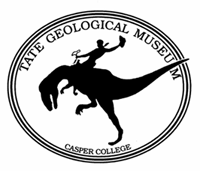 |
Tellus Museum
Tellus is a world-class 120,000 square foot museum located in Cartersville, GA just off I-75 at exit 293. The museum’s exhibits open minds and ignite a passion for science. Tellus features four main galleries: The Weinman Mineral Gallery, The Fossil Gallery, Science in Motion and The Collins Family My Big Backyard. A 120-seat digital planetarium and an observatory with a state-of-the-art 20-inch telescope are also located at Tellus.
http://tellusmuseum.org/
|
 |
Texas Memorial Museum
Texas Memorial Museum is the natural history museum on the campus of The University of Texas at Austin, where we bring the thrill of discovery to visitors of all ages. Exhibits focus on a beautiful variety of gems and minerals, Texas wildlife, a rich diversity of fossils. Spotlighted in the museum are spectacular fossil specimens found in Texas, including the largest flying creature ever found—the Texas Pterosaur, with a wingspan of nearly 40 feet, and a 30-foot mosasaur that swam the shallow sea that once covered most of the state. Online resources including an audio tour and activities for home and the classroom are available on the museum’s website.
http://tmm.utexas.edu/
|
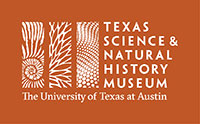 |
|
U
|
|
University of Alaska Museum of the North
The University of Alaska Museum is a vital component of the University of Alaska Fairbanks and is the only research and teaching museum in the state. The museum houses 1.4 million specimens and artifacts organized in 10 different disciplines that document Alaska's rich natural and cultural history. A diverse and extensive collection of Alaskan fossils are found in the Earth Science Collection, including thousands of Ice Age mammal specimens, and the largest collection of Arctic dinosaurs in the world."
http://www.uaf.edu/museum/
|
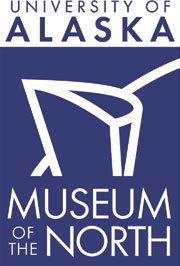 |
University of Arkansas Museum
The University of Arkansas Museum develops and maintains extensive collections totaling seven million objects in the fields of archeology, ethnography, geology, history, and zoology. The collections are available for exhibition, research, education, and loan and are housed at the University of Arkansas Collections Facility located at the University of Arkansas Agricultural Experiment Station.
https://fulbright.uark.edu/deans-office/facilities/university-collections-facility/museum-collections.php
|
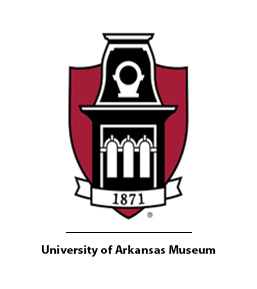 |
The University of California Museum of Paleontology
The mission of the University of California Museum of Paleontology (UCMP, Berkeley) is to investigate and promote the understanding of the history of life and the diversity of the Earth's biota through research and education. UCMP also hosts the Paleontology Portal, a collaborative project and a web resource for anyone interested in paleontology—from the professional in the lab, to the interested amateur scouting for fossils, to the student in any classroom.
http://www.ucmp.berkeley.edu/
|
 |
University of Colorado Museum of Natural History
The University of Colorado Museum fosters exploration and appreciation of the natural environment and human cultures through research, teaching, and community outreach. We provide academic training for graduate students in Museum and Field Studies; build, conserve, and interpret research collections; and offer exhibits and educational programs for the University and the public.
Explore science at the source, see incredible specimens from around the globe, hear famous artists and noted scholars speak about their work, or enjoy a family program at the University of Colorado Museum of Natural History in Boulder. Explore, Inspire, Learn, Engage.
http://www.colorado.edu/cumuseum/
|
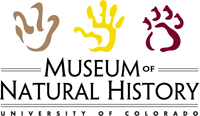 |
The University of Iowa Museum of Natural History
The University of Iowa Pentacrest Museums, Old Capitol Museum and the UI Museum of Natural History, seek to educate and inspire local and national communities through our collections, programs, exhibits and research. There is no better place to discover all things Iowa!
The mission of the University of Iowa Museum of Natural History is to inspire in visitors of all ages understanding and a sense of wonder, discovery, respect and responsibility for our natural and cultural worlds through exhibits, programs and collections, as well as through links with UI research and activities.
The Old Capitol Museum seeks to educate the university, local, and national communities on the continuing significance of the humanities, as an invigorated and distinguished building that serves as a center of culture and civic discourse for the State of Iowa, through public outreach initiatives, educational programming, exhibitions, and academic scholarship.
https://mnh.uiowa.edu/
|
 |
University of Michigan Museum of Natural History
The University of Michigan Museum of Natural History (Ann Arbor) is a dynamic, evolving organization committed to promoting the understanding and appreciation of the natural world and our place in it. We accomplish this through creative educational programs and exhibits for the benefit of the University community, school groups, and the general public.
http://lsa.umich.edu/ummnh
|
 |
University of Montana Paleontology Center
Our mission is to enhance education by serving as a center for research and public outreach in order to preserve the fossil heritage of Montana and other regions. Located in the Department of Geosciences, the University of Montana Paleontology Center (UMPC) was established by the Montana Board of Regents of in 2005. In 2008 the UMPC received a generous grant from the National Science Foundation to renovate the basement storage facility, install a Space-Saver compactor system, add 45 new metal cases that will accommodate the UMPC's growing fossil collection, and to create a unique website with an associated database. The UMPC collection contains an estimated 40,000 specimen-lots (an estimated 100,000 specimen elements) with over 1,050 representing type (published) specimens. This collection attracts visiting researchers, as well as, provides specimens via loan for scientific investigations regionally and abroad.
http://hs.umt.edu/paleo/default.php
|
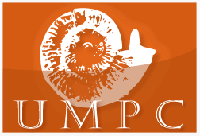 |
University of Nebraska State Museum
The University of Nebraska State Museum (Lincoln) was established in 1871 and has steadily grown into one of the leading research and educational science museums in the nation to be associated with a university. The Museum collects and interprets the natural, geological and anthropological history of the state and of the Great Plains, and holds the collections in trust for all Nebraskans. The Museum is comprised of the world-famous "Elephant Hall", a research collection containing over 13 million specimens, Mueller Planetarium, the Trailside Museum of Natural History at Fort Robinson State Park, and Ashfall Fossil Beds State Historical Park.
http://museum.unl.edu/
|
 |
University of Oregon Museum of Natural and Cultural History
The University of Oregon's Museum of Natural and Cultural History protects significant collections, enhances knowledge, and encourages stewardship of human and natural history through research, preservation, and education. Established in 1935-36, the museum is Oregon's primary repository for anthropological and paleontological collections and is home to hundreds of thousands of ethnographic and archaeological objects, fossils, and biological specimens. The museum is a center of interdisciplinary research and education, serving the University of Oregon, the K-12 community, and the wider public in the Pacific Northwest and beyond.
http://natural-history.uoregon.edu/
|
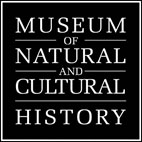 |
University of Wyoming Geological Museum
The University of Wyoming Geological Museum in Laramie functions to support both public education and scientific research. Wyoming is rich in geologic treasures and the Museum presents to the visitor some glimpse of this geologic diversity.
http://www.uwyo.edu/geomuseum/
|
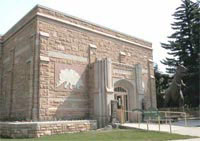 |
Utah Field House of Natural History—State Park Museum, Vernal, UT
The Utah Field House Museum is a State Park museum located in Vernal, UT. Within an 80-mile radius of Vernal, evidence of the entire Earth's history is visible. At its center is the Utah Field House of Natural History State Park Museum, which preserves and reveals the wealth of prehistory found within the Uinta Basin. Outside the museum, and providing the greatest appeal to passing visitors, is the Dinosaur Garden, a prehistoric zoo of full-size replicas ranging in age from Pennsylvanian through Pleistocene. The garden includes a 20-foot Tyrannosaurus with six-inch, knife-like teeth, a horned Triceratops, six-ton Stegosaurus, winged Pteranodon and other full-size prehistoric animal replicas.
https://stateparks.utah.gov/parks/utah-field-house/
|
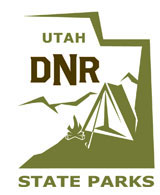 |
Utah Museum of Natural History
It is the mission of the Utah Museum of Natural History (Salt Lake City) to illuminate the natural world and the place of humans within it.
https://nhmu.utah.edu/
|
 |
|
V
|
|
Vassar College's Warthin Museum of Geology and Natural History
The A. Scott Warthin Museum of Geology & Natural History is located in Ely Hall at Vassar College, within the Department of Earth Science & Geography in Poughkeepsie, NY., and is open to all groups or individuals. The current collection owes its beginnings to the founder of our college, Matthew Vassar.
https://earthscienceandgeography.vassar.edu/facilities/museum/
|
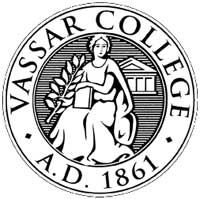 |
Virginia Museum of Natural History
The Virginia Museum of Natural History in Martinsville, Virginia is a place where scientific research about the Commonwealth of Virginia's natural history and public understanding merge. Exhibits, education programs for all ages, and publications translate the Museum curators' scientific research into easily understood language and concepts. The Museum's message is simple: Understanding natural history is the first step toward meeting the challenges of preserving and managing natural resources in the future. From the vacationer watching birds on the shores of the Chesapeake to the garden enthusiast in Alexandria, each and every Virginian directly benefits from the ongoing research and education programs at VMNH.
http://www.vmnh.net/
|
 |
|
W
|
|
The Weis Earth Science Museum
The Weis Earth Science Museum tells the story of Wisconsin's rich geological heritage. Our goals are to excite children about science, to help schools meet education standards, to promote lifelong learning and family experiences; to create better-informed citizens by providing earth-science knowledge; and to foster an appreciation of our natural landscape and the geological processes that created it. We do this through education, research, collections, interpretation and exhibits. In addition to collections of early Paleozoic and Quaternary fossils from Wisconsin and a variety of fossils from elsewhere, including dinosaur material, the Weis maintains an extensive collection of the Braidwood biota of the Pennsylvanian Mazon Creek site of Illinois.
http://www.weismuseum.org/index.html
|
 |
Western Science Center
The tripartite mission of the Western Center (Hemet, California) is to:
http://www.weismuseum.org/index.html
|
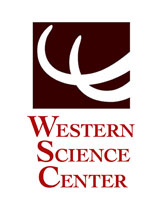 |
Whiteside Museum of Natural History
The Whiteside Museum of Natural History is committed to inspiring enthusiasm and creating opportunities for discovering our present and ancient world and the immense cultural significance represented by the town of Seymour, Texas. The information provided to the community will be as accurate and up-to-date as possible and disseminated through the use of educational programming, fun interactive exhibits, growing and changing collections, and scientific research. With the goal to empower people to go forth and use their experience in future meaningful ways, the museum will in return be recognized as an innovative and healthy place of learning and research. The museum will strive to lead by example in demonstrating responsibility to the planet and its people through an ongoing commitment to green energy and conservancy, and will maintain ethical standards within the industry. These values will extend throughout the museum’s presence within the community and beyond.
http://www.whitesidemuseum.org/
|
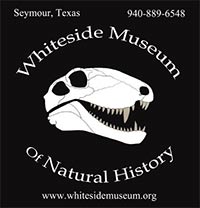 |
The Witte Museum
The Witte Museum (San Antonio, Texas) promotes lifelong learning through innovative exhibitions, programs, and collections in natural history, science and South Texas heritage.
http://www.wittemuseum.org/
|
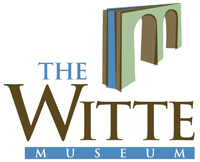 |
WonderLab Museum of Science, Health and Technology
The WonderLab Museum of Science, Health and Technology provides opportunities for people of all ages to experience the wonder and excitement of science. A saltwater aquarium and interactive fossil exhibits illuminate southern Indiana’s geologic history.
http://wonderlab.org/
|
 |
Wyoming Dinosaur Center
Providing the best paleontological experience by being a scientifically recognized institution that is educational, engaging, and enjoyable for visitors of all ages. The Center is located in Thermopolis.
http://www.wyodino.org/
|
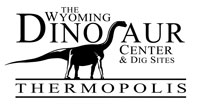 |
|
Y
|
|
Yale Peabody Museum of Natural History
The mission of the Peabody Museum is to serve Yale University (New Haven, Connecticut) by advancing our understanding of earth's history through geological, biological, and anthropological research, and by communicating the results of this research to the widest possible audience through publication, exhibition, and educational programs.
Fundamental to this mission is stewardship of the Museum's rich collections, which provide a remarkable record of the history of the earth, its life, and its cultures. Conservation, augmentation and use of these collections become increasingly urgent as modern threats to the diversity of life and culture continue to intensify.
http://peabody.yale.edu/
|
 |



























































































































































